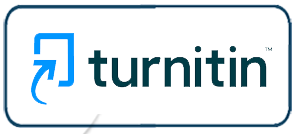PENINGKATAN HASIL BELAJAR SISWA PADA MATA PELAJARAN IPA KELAS IV A SDN 2 KELAYU UTARA MELALUI PENERAPAN MODEL PEMBELAJARAN BERBASIS MASALAH
Abstract
The low student learning outcomes are influenced by the lack of student readiness in receiving lessons and the application of scientific models or methods in learning has not varied, so that the activity in receiving learning is still lacking. The purpose of this study is to improve the learning outcomes of grade IV A students in science subjects at SDN 2 North Kelayu through the application of a problem-based learning model with a scientific approach and to find out whether there are differences in science learning outcomes between before and after the application of a problem-based learning model with a scientific approach. This study involved 25 students of class IV A as subjects with the help of a teacher and colleagues as observers. The research steps were carried out in two. The cycle under study has the following stages: planning, implementation, observation, and evaluation and reflection. The data collection techniques used observation methods for student activity data and teacher activities, as well as evaluation tests for student learning outcomes data. Based on the research, it was found that the students' classical mastery increased from 64% in the first cycle to 92% in the second cycle. Thus this classroom action research is declared complete because all predetermined success indicators have been achieved, namely student learning outcomes are said to increase if 80% of students get a score of 70. The increase in the average value of each cycle can be said to be significant, because the value of t count in the cycle I, which is 5.068, is greater than t table, which is 2,0105, the value of t arithmetic in cycle II is also greater than t table (7.276> 2.0105) with a significant level of 5%. So it can be said that there are significant differences before and after the application of the problem-based learning model with a scientific approach.
References
Arikunto, S., Suharjono, & Supardi. (2010). Penelitian Tindakan Kelas. Jakarta: Bumi Aksara.
Arikunto, Suharsimi. (2013). Dasar-dasar Evaluasi Pendidikan. Jakarta: Bumi Aksara.
Hosnan, M. (2014). Pendekatan Saintifik dan Kontekstual dalam Pembelajaran Abad 21. Bogor: Ghalia Indonesia.
NASIONAL, P. O. S. U., TSANAWIYAH, M., & ALIYAH, M. (2006). Badan Standar Nasional Pendidikan.
Susanto, Ahmad. (2014). Teori Belajar dan Pembelajaran di Sekolah Dasar. Jakarta: Kencana Prenadamedia Group.
Undang-undang Sisdiknas no. 20 tahun 2003. www.hukumonline.com. Diunduh tanggal 5 Desember 2014.
Copyright (c) 2021 Ratna Azamti, I Nyoman Karma, Muhammad Makki, Ratnadi Ratnadi

This work is licensed under a Creative Commons Attribution-NonCommercial-ShareAlike 4.0 International License.






